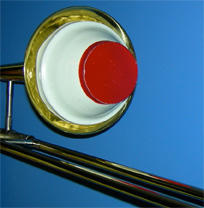
Signal modifiers
In my last blog post “Signal Flow & Music Notation part 1” I gave you the examples of signal flow of water in my backyard:
spigot>hose>Laurie’s face.
And signal flow in an audio environment:
synthesizer>cable>mixer channel 1>main output of mixer>cable>amp>cable>speaker.
I promised this is going to apply to music notation software but first let me introduce you to one other concept regarding signal flow that will help in your quest to learn and trouble shoot music notation software.
What are Signal modifiers?
Simply put, a modifier is anything that changes or modifies the original signal or element we’re flowing in our signal flow chain. Let’s add a modifier to each of the situations above to give you an idea of what a signal modifier does.
The backyard hijinks with my sister and the water hose would have been much more spectacular, if I could have run the water through a container of green dye. So if the signal flow chain was now: spigot>hose>(modifier) green dye>Laurie’s face, my sister would not only be wet but the water would be green and perhaps have turned her green as well, cool!
In audio, I’m sure you are familiar with signal modifiers, the most common one being reverb. If we added reverb to the synthesizer output as it goes through the mixer the signal flow chain would be: synthesizer>cable>mixer channel 1<(modifier) reverb>main output of mixer>cable>amp>cable>speaker. Now you’ve got a synth that sounds like it’s echoing off the walls of a giant cathedral.
Just like signal flow, once you are aware of signal modifiers you see them everywhere in daily life. The shift key on your computer keyboard is a modifier, (pressing shift key now) IT CHANGES THE OUTPUT OF ALL YOUR KEYSTROKES WHILE IT IS HELD DOWN, a mute stuck in a trombone bell is a signal modifier the sound is changed as it passes through, 3 D glasses worn at the movie theater change the visual signal your eyes receive, etc.
As a review, the basic signal flow chain is;
source> chain (with or without modifiers)> output.
And in the next blog post, “How Signal Flow Applies to Music Notation Software.”
Hinch
P.S. At the top of this post is my custom crafted Williams Model 6 trombone with a signal modifier inserted. This wonderful instrument was made for me by master brass instrument craftsman John Duda at Calicchio.
Leave a Reply